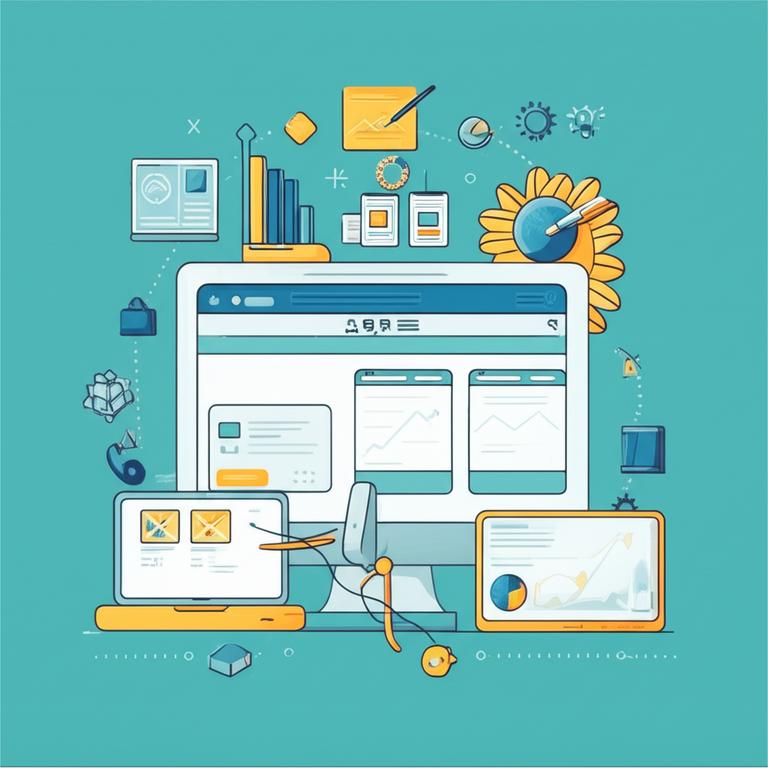UX Design: The Ultimate Guide to User Experience

Understanding User Experience (UX) Design
Nội dung
User experience (UX) design is the process of creating products that provide meaningful and relevant experiences to users. It involves designing the entire process of acquiring and integrating a product, including aspects of branding, design, usability, and function. UX design answers the questions: Who, What, Where, When, Why, and How.
What is UX Design?
UX design encompasses all aspects of the end-user’s interaction with a company, its services, and its products. It’s not just about making a product look pretty; it’s about ensuring that it’s easy to use, efficient, and enjoyable. Good UX design anticipates the user’s needs and provides solutions before they even realize they have a problem.
Why is UX Design Important?
- Increased Customer Satisfaction: A positive user experience leads to happier customers who are more likely to return.
- Improved Conversion Rates: Easy-to-use products and websites result in higher conversion rates.
- Reduced Support Costs: Intuitive designs minimize the need for user support.
- Enhanced Brand Loyalty: A great UX fosters a strong connection between users and the brand.
- Better ROI: Investing in UX design delivers a significant return on investment.
The 5W1H of UX Design
- Who: Who are your users? Understand their demographics, needs, and goals.
- What: What are your users trying to achieve? Define the user’s tasks and objectives.
- Where: Where are your users interacting with your product? Consider the context of use (e.g., mobile, desktop).
- When: When are users interacting with your product? Time of day, frequency of use.
- Why: Why are users choosing your product? What are their motivations?
- How: How can you make the experience seamless and enjoyable? Design the interaction flow.
The UX Design Process
The UX design process typically involves the following stages:
1. UX Research
Understanding your users is crucial. This involves:
- User Interviews: Directly asking users about their needs and pain points.
- Surveys: Gathering quantitative data from a large user base.
- Usability Testing: Observing users as they interact with your product.
- Competitive Analysis: Evaluating the UX of competitor products.
Example: Conducting user interviews to understand the pain points of small business owners when using point-of-sale (POS) systems. This could reveal difficulties in managing inventory, processing payments, or generating reports.
2. Information Architecture (IA)
Organizing content and navigation in a way that is logical and easy for users to understand. This includes:
- Card Sorting: Allowing users to group content in a way that makes sense to them.
- Site Mapping: Creating a visual representation of the website’s structure.
Example: Designing the navigation menu of an e-commerce website to ensure users can easily find the products they are looking for.
3. Wireframing and Prototyping
Creating low-fidelity prototypes to test the basic layout and functionality. This includes:
- Sketching: Quickly drawing out ideas and concepts.
- Digital Wireframing: Creating more detailed prototypes using software like Figma or Sketch.
Example: Creating a wireframe of a mobile app’s checkout process to ensure it is simple and intuitive.
4. Visual Design
Creating the look and feel of the product. This includes:
- Choosing colors, typography, and imagery.
- Creating a style guide to ensure consistency.
Example: Designing the visual interface of a point-of-sale system to be clean, modern, and easy on the eyes.
5. Usability Testing
Testing the product with real users to identify any usability issues. This involves:
- Observing users as they interact with the product.
- Collecting feedback on their experience.
Example: Conducting usability testing of a new point-of-sale system to identify any areas where users are struggling.
6. Iteration
Making changes to the design based on user feedback. This is an ongoing process.
Example: Redesigning a particular feature of the POS system based on feedback from usability testing.
Essential UX Design Tools
- Figma: A collaborative interface design tool.
- Sketch: A vector-based design tool.
- Adobe XD: A UX design tool from Adobe.
- InVision: A prototyping and collaboration tool.
- Miro: A collaborative whiteboard platform.
UX Design Best Practices
- Focus on the User: Always keep the user’s needs in mind.
- Keep it Simple: Avoid unnecessary complexity.
- Be Consistent: Use consistent design patterns.
- Provide Feedback: Let users know what’s happening.
- Test Early and Often: Get user feedback throughout the design process.
UX and POS Systems: A Practical Example
Consider a point-of-sale (POS) system. A well-designed POS system can significantly improve the customer experience and streamline operations for businesses.
UX Considerations for POS Systems:
- Ease of Use: The system should be intuitive and easy for employees to learn and use.
- Speed and Efficiency: Transactions should be processed quickly and efficiently.
- Customization: The system should be customizable to meet the specific needs of the business.
- Reporting: The system should provide clear and accurate reports.
- Integration: The system should integrate seamlessly with other business systems, such as accounting software and inventory management systems.
Ebiz and UX
Ebiz is a software that should consider UX principles to provide a seamless experience for users. A well-designed Ebiz interface can improve efficiency, reduce errors, and enhance user satisfaction. Focus on intuitive navigation, clear data presentation, and customizable options.
Resources for Further Learning
- Nielsen Norman Group: A leading research firm in the field of UX.
- Interaction Design Foundation: An online education platform for UX design.
- UX Planet: A Medium publication dedicated to UX design.
By understanding and implementing UX design principles, businesses can create products that are not only functional but also enjoyable to use, leading to increased customer satisfaction and business success.
Explore our Point of Sale system offerings at https://www.phanmempos.com/cua-hang to see how UX design enhances business operations.

